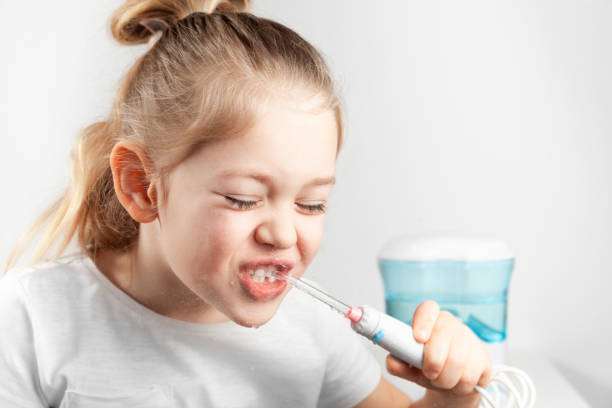People’s dental routines have included brushing and flossing for many years. To their dentist, everyone always says they floss every day, but it is likely that we all miss one or two days. Since dental floss first entered the market, a new player called The WaterPik has emerged to challenge it.
Not sure which one to incorporate into your routine? Let’s examine which choice might be the best for your oral health.
What is a Waterpik?
A water flosser or oral irrigator by the name of “Waterpik” is one that uses water to squirt away food particles from in between your teeth. For those who struggle with traditional flossing, which entails threading a material resembling string between your teeth, water flossers may be a good alternative.
Water flossing removes food particles and bacteria that have become lodged between teeth, just like traditional flossing does. This prevents plaque formation. You can’t brush your teeth in those little crevices. Additionally, using water floss can lessen gum disease and bleeding.
What is Flossing?
In order to maintain good oral hygiene, dental floss has always been essential. The best method for maintaining clean teeth is interdental cleaning, which includes flossing, according to American dentists.
Dental floss should be used by all. With floss, you can remove bacteria and plaque buildup from every tooth before they can cause tartar. Control is one of the many factors that contribute to the continued popularity of this approach. As opposed to a water flosser, string floss is simpler to use in between the teeth.
Is a Waterpik Better Than Flossing?
Users of water pick report that their mouths feel fresher after using them, and this is because water flossers are more effective at removing plaque than dental floss or floss picks are.
According to studies, water flossers remove 29% more plaque than floss. For those with sensitive gums, water flossers are additionally more gentle. Water flossers are also typically simpler to use than most other interdental cleaners for patients with limited manual dexterity.
The best flosser is the one you actually use, so water flossers are excellent dental care tools.

Waterpik Pros and Cons
Because brushing cannot reach all of the spaces between your teeth, proper oral hygiene technique necessitates the use of an interdental cleaning tool. To remove food particles and plaque from these hard-to-reach areas, the Waterpik Water Flosser applies pressure to the water.
However, should you still floss after using Waterpiks?
The latter is what we advise. Your oral health depends on removing plaque, so you should carefully weigh the benefits and drawbacks of a Waterpik and how to incorporate it into your oral hygiene routine.
Pros of a Waterpik Water Flosser
• Dislodges food and plaque between teeth quickly.
• All areas of your mouth can be easily reached thanks to the handle.
• Bacteria are successfully removed from deep pockets surrounding teeth using the Waterpik.
• allows for easier cleaning of dental bridges, implants, and braces by delivering pulsating water pressure.
Cons of a Waterpik Water Flosser
• Compared to traditional dental floss, a Waterpik is more expensive.
• To use or recharge your water flosser, you need a power source.
• Plaque removal requires the use of the highest pressure setting. To do this comfortably, it is best to start at a low setting and increase it gradually.
Flossing Pros and Cons
The use of pointed sticks and other tools by ancient people to clean their teeth’s interdental spaces is supported by archaeological findings. However, it appears that dental floss dates back to 1815 when a dentist in New Orleans started advising his patients to use silk thread to clean in between their teeth. Johnson and Johnson created and patented unwaxed dental floss later in the century.
By the 1970s, dentists advised flossing as a vital component of a successful daily oral hygiene regimen. The method dentists most frequently suggest for cleaning between teeth is still flossing. According to studies, plaque between teeth is removed by flossing before brushing.
Since silk thread was utilized in 1815, floss has undergone a significant change. To help make flossing quicker and more effective, a variety of floss and floss holders are now available.
Pros of Flossing
• Inexpensive
• No power source is needed
• Easy to obtain
• Proven efficiency
Cons of Flossing
• Difficult to learn
• Time-consuming
• Challenging to clean some areas of the mouth
• Hard to master the technique
• Easy to cut gums
Conclusion: Waterpik Is Better
An important aspect of oral hygiene is selecting and using a water flosser. One aspect of dental health is keeping teeth and the spaces between them clean. Oral health requires comprehensive dental and periodontal treatment from experts you can rely on.
In addition to keeping an eye out for issues like gingivitis, cavities, or periodontal disease, dental and periodontal care can also offer guidance on maintaining good oral hygiene to prevent these conditions from developing.



